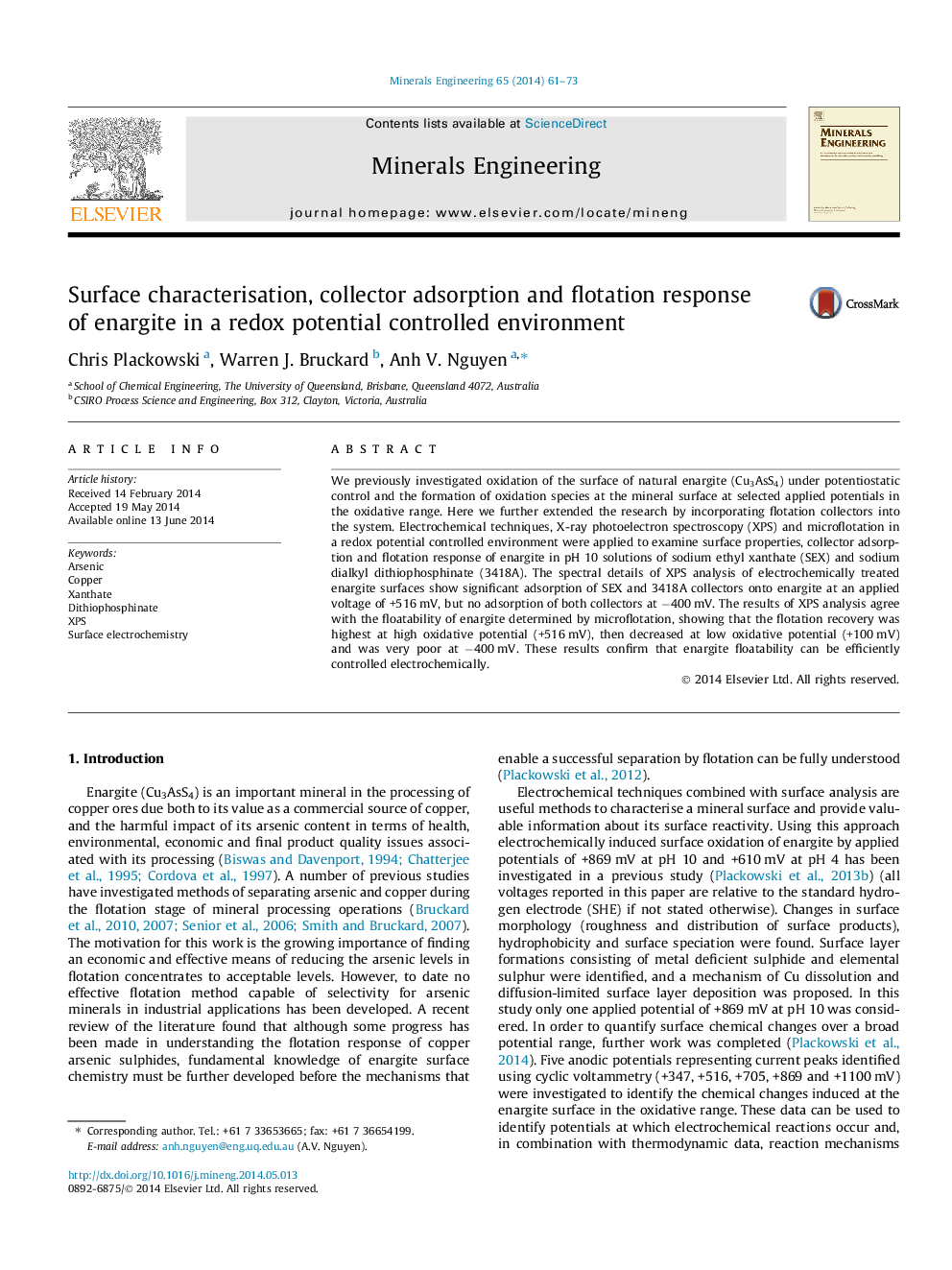| Article ID | Journal | Published Year | Pages | File Type |
|---|---|---|---|---|
| 233183 | Minerals Engineering | 2014 | 13 Pages |
•Collector adsorption on enargite is controlled by applied potential.•Adsorption was shown to occur at +516 mV but not −400 mV.•Eh controls enargite floatability, with 69–80% recovery after conditioning at +500 mV.•Recovery drops to 11–31% when the mineral is conditioned at −400 mV.
We previously investigated oxidation of the surface of natural enargite (Cu3AsS4) under potentiostatic control and the formation of oxidation species at the mineral surface at selected applied potentials in the oxidative range. Here we further extended the research by incorporating flotation collectors into the system. Electrochemical techniques, X-ray photoelectron spectroscopy (XPS) and microflotation in a redox potential controlled environment were applied to examine surface properties, collector adsorption and flotation response of enargite in pH 10 solutions of sodium ethyl xanthate (SEX) and sodium dialkyl dithiophosphinate (3418A). The spectral details of XPS analysis of electrochemically treated enargite surfaces show significant adsorption of SEX and 3418A collectors onto enargite at an applied voltage of +516 mV, but no adsorption of both collectors at −400 mV. The results of XPS analysis agree with the floatability of enargite determined by microflotation, showing that the flotation recovery was highest at high oxidative potential (+516 mV), then decreased at low oxidative potential (+100 mV) and was very poor at −400 mV. These results confirm that enargite floatability can be efficiently controlled electrochemically.
Graphical abstractFigure optionsDownload full-size imageDownload as PowerPoint slide
